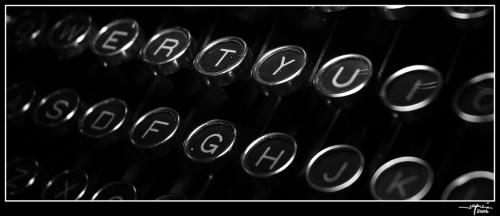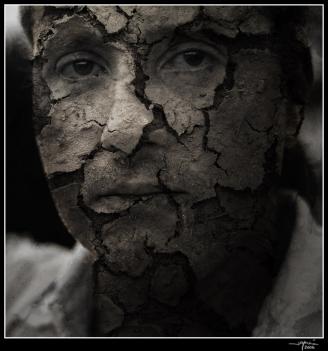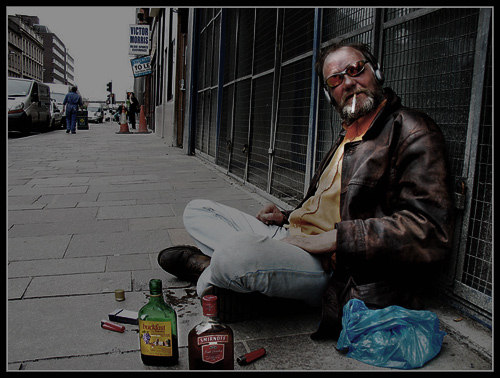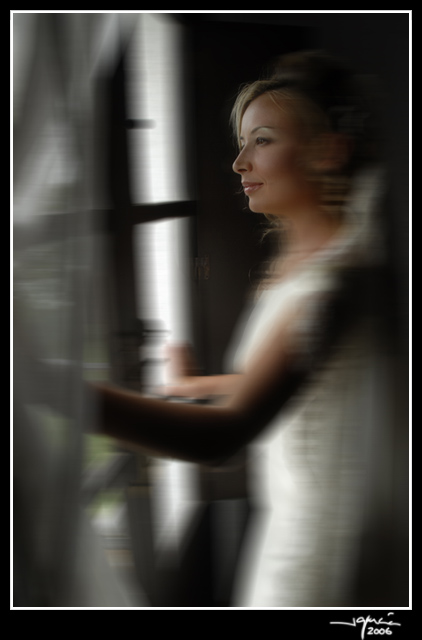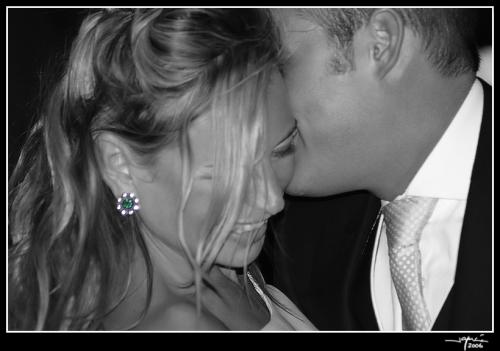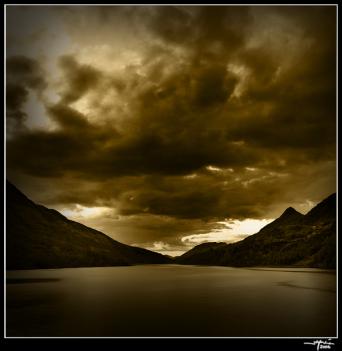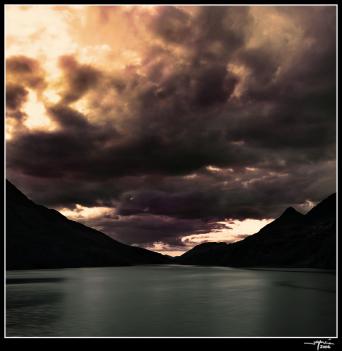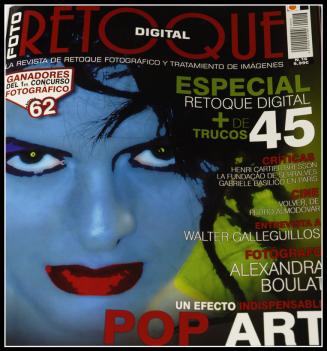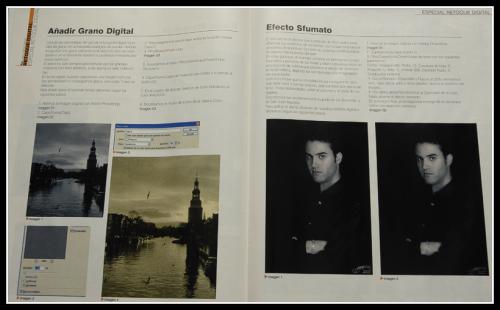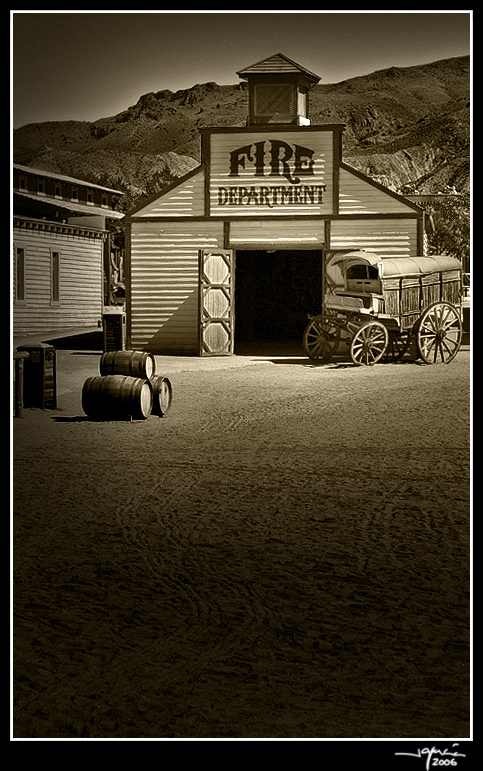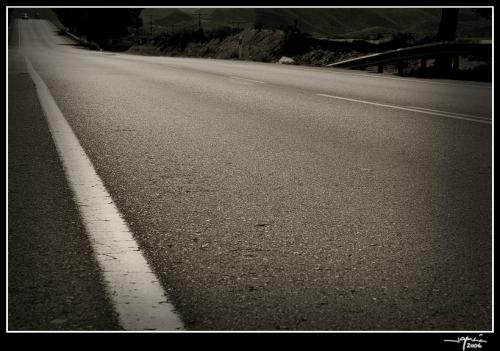El neerlandés Peter Van Stralen estudió diseño gráfico (1979-1984) en la academia de artes de Arnhem (Países Bajos). Durante este periodo descubrió su pasión por la fotografía.
Tras los estudios trabajó como fotógrafo de autor centrándose en la fotografía en fine art en blanco y negro. Estas fotografías fueron publicadas en varias publicaciones (Leica Photography International, The New Nude Magazine…) y expuestas en varias galerías (Leica Galerie, Solms, and the Aktgalerie, Berlin 2004).
En marzo de 2001 publicó el libro de fotografías FIGUREN publicado por Umschau-Braus en Francfort, Alemania: 120 páginas con más de 100 fotografías en blanco y negro (ISBN 3-8295-6832-0).
Peter Van Stralen studied graphic designer at the
Academy of Arts in
Arnhem,
The Netherlands. During this study period, his interest in photography was awakened.
Since then he has been working as an artist/photographer, whose non-commercial activities have mainly been focussed on fine art black and white photography.
His photographs have been published in several magazines (e.g. Leica Photography International, The New Nude Magazine) and have been exhibited in The Netherlands as well as abroad (Leica Galerie, Solms, and the Aktgalerie, Berlin 2004).
In March 2001 the photo book FIGUREN was published by Umschau-Braus in Frankfurt, Germany: 120 pages with over 100 black-and-white photographs (ISBN 3-8295-6832-0).
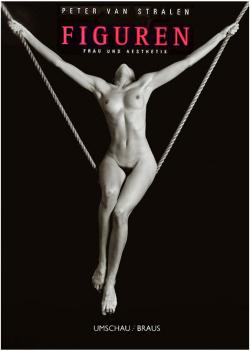
Orígenes
Después de haber publicado mi primer libro de fotos ‘FIGUREN’ en 2001, ahora estoy intentando conseguir formas del cuerpo femenino incluso mas extrañas que las de ‘FIGUREN’. Las fotos de esta nueva serie tienen el titulo provisional: ’ODD BODIES’.
En mi opinión, la típica fotografía de desnudos desafortunadamente sólo muestra imágenes bastante previsibles o incluso imágenes banales y degradantes. Por este motivo he decidido mostrar el cuerpo femenino desde otra perspectiva: ni común ni erótica, sino extraña. Existen muchos libros enfocados al desnudo femenino, pero casi todos tratan los aspectos sensuales y eróticos del tema. El libro que quiero conseguir sin embargo tiene un enfoque distinto: mi tema es el distanciamiento de formas familiares del cuerpo femenino. Así que, no sólo el tema sino también el libro en si podría ser un cuerpo extraño “odd body” en el mundo de la fotografía de desnudos. Hay pocos fotógrafos que traten este tema tal como lo hago yo. Para mi, las mujeres no son solamente familiares y sensuales sino también bastante extrañas y extraordinarias. Así esta serie refleja tanto mi admiración como mi asombro ante el fenómeno llamado “mujer”.
Mi estilo está profundamente influido por mi formación como diseñador gráfico: es bastante directo y sencillo. En consecuencia, mi cámara y yo jugamos con las formas del cuerpo de los bailarines de un modo sencillo: estoy convencido que ‘menos’ normalmente significa ‘más’.
Tanto forma como composición juegan una parte importante en mi trabajo y ya que, en mi opinión, el uso de color quita la esencia de una imagen, prefiero el uso de material en blanco y negro.
Para evitar influencias que están de moda y temporales en las fotografías, las imágenes fueron creadas deliberadamente en un ambiente casi ausente de tiempo y espacio. Ya que los bailarines deberían ser considerados como ‘intérpretes’, también he intentado evitar cualquier identificación con la persona tras la figura en la fotografía.
Datos Técnicos
Todas las imágenes de esta serie fueron creadas en mi estudio con las cámaras y objetivos Leica R6 y R9 usando películas ‘lentas’ como Kodak Technical Pan, AGFA Copex, o Kodak Imagelink HQ. Fuentes de luz proporcionadas gracias a Bowens Esprit 1000 unidades de flash.
Las fotografías originales se imprimen en Ilford Multigrade Warmtone barytapaper usando Kodak Rapid Selenium toner por propósitos de conservación.
Ninguna imagen ha sido alterada digitalmente: todo lo que se ve ocurrió de verdad en el estudio.
Biografía
Desde 1979 hasta 1984 estudié para ser diseñador gráfico en la Academia de las Artes en Arnhem, Holanda. Durante este periodo se despertó en mí un interés por la fotografía.
Desde entonces he estado trabajando como artista/fotógrafo, cuyas actividades no-comerciales han sido enfocadas principalmente a la fotografía en blanco y negro de las bellas artes. Estas fotografías fueron publicadas en varias revistas (Ej. Leica Photography International, The New Nude Magazine) y fueron exhibidas en Holanda además de en el extranjero. (Leica Galerie, Solms, y la Aktgalerie, Berlín 2004).
En marzo de 2001 mi libro de fotografías FIGUREN fue publicado por Umschau-Braus en Frankfurt, Alemania: 120 paginas con más de 100 fotografías en blanco y negro. (ISBN 3-8295-6832-0).
Extracto de una entrevista con Andrew Kaiser, editor The New Nude Magazine, Julio 2005
¿Qué es lo que te fascina del cuerpo humano? ¿Por qué has elegido trabajar el tema de los desnudos?
Desde un punto de vista estético el cuerpo humano ha sido una fuente de inspiración para muchos artistas para que expresen sus pensamientos y sentimientos. Como el pintor Henri Matisse dijo: “no pinto a la modelo sino su efecto en mi.” desde un punto de vista técnico el cuerpo es una máquina increíble. Es nuestro propio vehículo, nuestra caja de herramientas privada. Estamos tan acostumbrados a esto que a veces no vemos su belleza, no sólo en un sentido técnico o erótico, sino en muchos otros aspectos de nuestro vida cotidiana también. Es capaz de expresar tantas cosas: si ves una actuación de baile entenderás lo que quiero decir.
En tus propias palabras mencionas que retratas a las mujeres como algo “ni común, ni erótico, sino extraño” ¿Me puedes contar un poco más acerca de esta filosofía?
Durante las últimas décadas he visto los trabajos de muchos fotógrafos de desnudos pero desafortunadamente sus fotografías han resultado ser bastante previsibles. Ya sabes: se escoge a una chica guapa, se aplica mucho maquillaje, se sacan muchas fotos “sexys” y se gana mucho dinero fácilmente, y ya está; nada nuevo, simplemente la misma rutina una y otra vez. Quizás estos fotógrafos creen que sus fotografías simplemente deben ser “preciosas” y no expresivas ni significativas a un nivel personal. Obviamente, la belleza y la estética hacen que una fotografía sea agradable de mirar y fácil de digerir pero en mi opinión la belleza nunca debería ser el objetivo a priori en la fotografía. La belleza es un plus añadido.
Así que decidí tomar otro enfoque: intenté plasmar mi fascinación por las mujeres en fotografías extrañas, raras o absurdas. De esta forma las mujeres se están convirtiendo en metáforas de la vida en si, que no es solamente aburrida, previsible o sexy sino también algo misterioso, extraños, feo, solitario, y absurdo. Para mi las mujeres son criaturas fascinantes; no sólo sensuales sino también misteriosas y a menudo incomprensibles e imprevisibles también. Quizás me fascinan porque encarnan tantas cosas que yo no soy.
La gente que eliges como modelos obviamente son muy flexibles y en contacto con la forma en que se mueven sus cuerpos. ¿Como encuentras modelos que puedan actuar de esta forma?
La mayoría de mis modelos son bailarinas de ballet profesionales, que no sólo tienen cuerpos bien entrenados sino que también tienen el estado mental adecuado para realizar estas fotografías. La mayoría de las chicas sólo quieren salir guapas en una foto, así que no son apropiadas para el tipo de fotografía que hago. Las bailarinas sin embargo son artistas por derecho propio así que aprecian lo que hago y por consiguiente son capaces de responder utilizando su propia formación artística.
Mi ciudad natal tiene una academia de baile y una excelente compañía de baile. Así que es aquí donde me dirijo cuando busco modelos nuevos. Admiro profundamente a estas bailarinas ya que combinan poder y elegancia de una forma muy natural.
Durante años bailarinas de varios países europeos han participado en mis proyectos de estudio. Esta interacción entre estas jóvenes mujeres muy distintas entre si, por un lado, y mi propia formación (foto)gráfica, por otro lado, ha resultado ser muy valiosa. Debo mi agradecimiento a todas por sus esfuerzos y la inspiración que me han proporcionadas durante innumerables sesiones de fotografía. Así que, considero las fotografías no solo mías sino también nuestra creación común.
Origins
Having published my first photo book ‘FIGUREN’ in 2001, I am now trying to produce even stranger female body forms than was the case in ‘FIGUREN’. Pictures from this new series I have given the working title: ’ODD BODIES’.
In my opinion, ordinary nude photography unfortunately only shows rather predictable or even banal and degrading images. This is why I have chosen to show female body forms from a somewhat different perspective: neither common nor erotic, but strange. There are shelf loads of books focussing on female nudity, but nearly all of them revolve around the sensual, erotic aspects of this theme. The book that I am aiming at, however, is taking a different approach: my theme is the estrangement of familiar female body forms. Therefore, not just the theme but also the book itself might be an odd body in the world of nude photography, since there are not that many photographers who deal with this subject in the same manner as I do.To me, women are not just familiar and sensual, but also quite strange and remarkable. This series therefore reflects both my admiration and my amazement about this phenomenon called: Woman.
My style is strongly influenced by my background as a graphic designer: it is quite direct and simple. Consequently, my camera and I played with the dancers’ body forms in a rather straightforward fashion: I am convinced that ‘less’ usually means ‘more’.
Both form and composition play an important part in my work, and because -in my opinion- color often distracts from the essence of an image, I prefer the use of black-and-white materials.
In order to avoid fashionable or temporal influences on my photographs, the images were deliberately created in an almost time- and space less environment. Since the dancers should be regarded as ‘interpreters’, I have also tried to avoid any identification with the person behind the figure on the photograph.
Technical Data
All pictures from this series were created in my studio with Leica R6 and R9 cameras and lenses using ‘slow’ films such as Kodak Technical Pan, AGFA Copex, or Kodak Imagelink HQ. Light sources are provided by by Bowens Esprit 1000 flash units.
Original photographs are printed on Ilford Multigrade Warmtone barytapaper using Kodak Rapid Selenium toner for conservating purposes.
None of these pictures has been digitally altered: everything you see actually did happen in my studio.
Biography
From 1979 until 1984, I studied to become a graphic designer at the Academy of Arts in Arnhem, The Netherlands. During this study, my interest in photography was awakened.
Since then I have been working as an artist/photographer, whose non-commercial activities have mainly been focussed on fine art black and white photography. These photographs were published in several magazines (e.g. Leica Photography International, The New Nude Magazine) and were exhibited in The Netherlands as well as abroad (Leica Galerie, Solms, and the Aktgalerie, Berlin 2004).
In March 2001 my photo book FIGUREN was published by Umschau-Braus in Frankfurt, Germany: 120 pages with over 100 black-and-white photographs (ISBN 3-8295-6832-0).
Interview published in The New Nude Magazine – July 2005 –
What fascinates you about the human body? Why do you choose to work in the nude medium?
From an aesthetic point of view, the human body has been a source of inspiration for countless artists to express their thoughts and feelings. As the painter, Henri Matisse once said, “I am not painting the model, I am painting the effect she has on me”.
From a technical point of view, the body is an amazing piece of machinery. Our body is our very own vehicle, our private toolbox.
We have grown so accustomed to this that we sometimes fail to see its beauty, not just in a technical or erotic sense, but in many other aspects of our everyday lives as well. It is capable of expressing so many things: just look at a dance performance and you will know what I mean.
In your own words, you mention that you choose to portray women as “neither common nor erotic, but strange.” Can you tell me a bit more about this philosophy?
Over the last decades, I have looked for the works of many nude photographers, but unfortunately, their pictures often turned out to be rather predictable. You know: take a pretty girl into your studio, use a lot of make up, take a lot of sexy pictures and then make a lot of easy money -and that’s it: nothing new, just the same old routine over and over again. Maybe these photographers feel that their pictures should be simply ’beautiful’ instead of personally meaningful and expressive. Obviously, beauty and aesthetics make a picture pleasant to look at and easy to digest, but in my opinion beauty should never be the a priori goal in photography. Beauty is a bonus.
Therefore, I decided to take a different approach: I tried to translate my fascination with women into strange, funny, or absurd photographs. In this way, women are becoming metaphors of life itself, which is not just boring, predictable or sexy, but also quite mysterious, funny, ugly, lonely and absurd. To me, women are fascinating creatures –not just sensual, but also mysterious, and often incomprehensible and unpredictable too. Perhaps they fascinate me, because they embody so many things that I am not.
The people you choose to use as models are obviously very flexible and in touch with the way, their bodies move? How do you go about finding models who can perform in this way for you?
Most of my models are professional ballet dancers, who do not just have well-trained bodies, but also have the right state of mind to produce these pictures. Most girls just want to look pretty on a photograph, so they are not suitable for my kind of photography. These ballet dancers however are performing artists in their own right, so they appreciate what I am doing and consequently they are able to respond to my photography from their own artistic background.
My hometown is home to both a dance academy and an excellent dance company. So this is where I go, when I am looking for new models. I have a deep admiration for these dancers, as they are able to combine power with grace in a very natural way.
Over the years, dancers from several European countries have participated in my studio projects. This interaction between these very different young women on the one hand and my own (photo-)graphic background on the other hand has turned out to be very valuable: I owe all of them a lot of gratitude for the effort and inspiration, which they have given to me during countless photo sessions. Therefore, I consider these photographs not just as my own pictures, but also as our common creation.
Muchas gracias por conceder a jggweb la entrevista, Peter.
Thank you very much for the interview, Peter.
